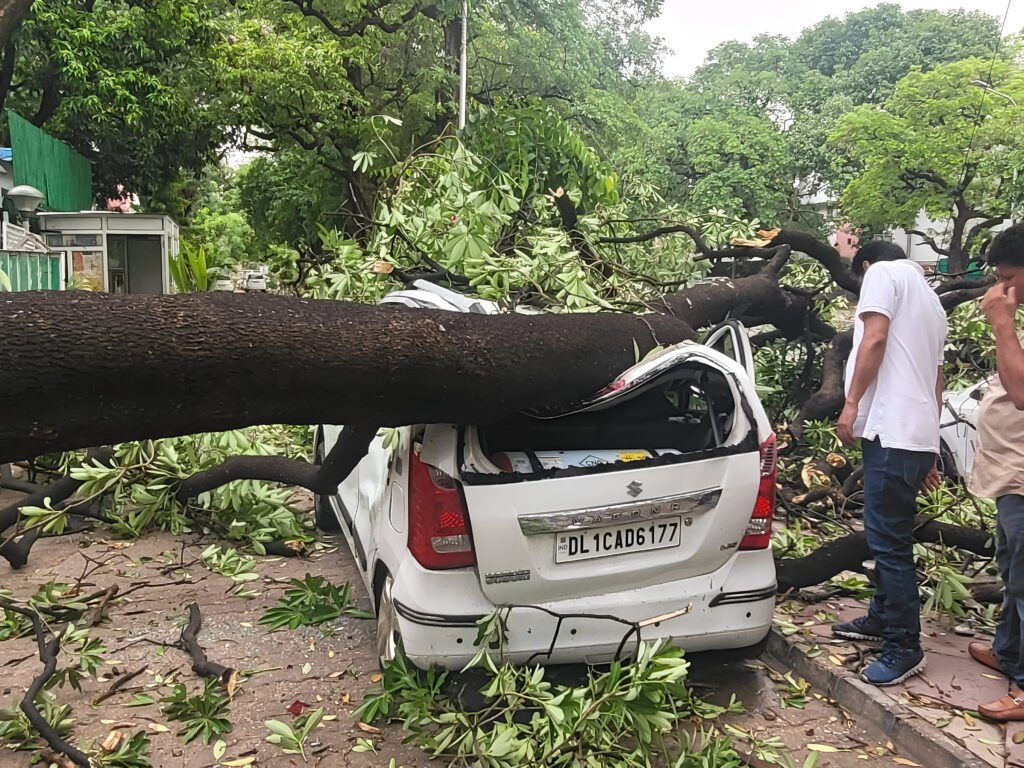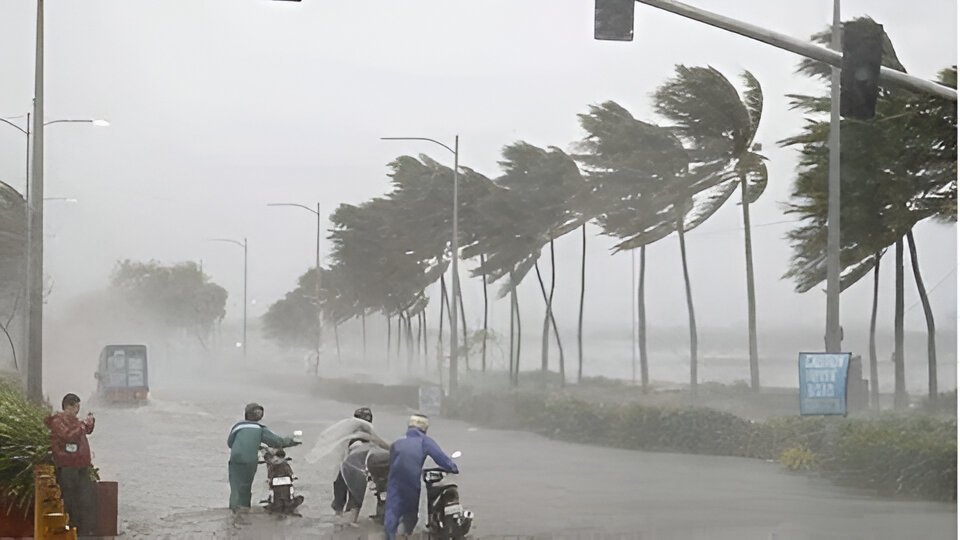
On May 2 of the year 2025, New Delhi and NCR areas faced the severe conditions of dust storms, rains, and even strong winds. This led to heavy disruption of activities in a person’s daily life, which included the loss of life of many people, traffic, and delays in the flights that were supposed to take off.
Tragic Loss of Lives Due to Storm
In a devastating tragedy, 26-year-old women faced the demise of their eldest son Aryan, aged 7; Rishabh, aged 5; and Priyansh, who was 7 months old. All of them died when a heavy wind uprooted a tree that fell on their ramshackle house located in Kharkari Nahar village, Najafgarh. Her husband, Ajay, also suffered small-level injuries. Weather events on a sudden basis can have grave outcomes, which can impact people aged who are the most vulnerable in society, and today illustrate this fact.
Flight Operations Severely Disrupted
Severe weather conditions fully caused deadlock at Indira Gandhi International Airport. Over 200 flights were delayed, and at least 40 had to be rerouted to some other airports like Jaipur and Ahmedabad. Passengers are waiting on average claims of 46 minutes of delay in arrivals and 54 minutes for departures. Airlines, also like Air India and IndiGo, were also seen issuing advice, seeking their customers to check the flight status before arriving at the airport.
Traffic Disorder in the Capital
Waterlogging in several parts of Delhi due to heavy rainfall inflicted severe traffic congestion. Important locations like Minto Bridge, Khanpur, and RK Puram were hit the hardest. Some commuters reported being stuck in traffic for hours, with certain cars even getting trapped in waterlogged underpasses. They cleared the debris, and normalcy was restored by the Municipal Corporation’s teams.

Storm’s Meteorological Explanation
While explaining the shift in weather, the India Meteorological Department (IMD) pointed towards the amalgamation of a western disturbance along with moist winds as the reason. The storms included thunderstorms along with heavy rains and wind speeds of 80 km/h. With these conditions, the IMD issued a red alert to Delhites asking for vigilance and precautionary measures to be taken.
Damage to Structures and Safety Services
There was substantial infrastructural damage caused by the storm. A metal structure near Terminal 3 of the Delhi airport collapsed, damaging Delhi airport infrastructure majorly, further causing the uprooting of many trees across the city that blocked roads and damaged buildings. Injuries were not reported, but emergency services attended to these matters for proper and timely action.
Government Actions and the Public’s Reaction
Residents vented anger over the lack of the city’s preparedness for such an event. Many flooded social media with pictures, videos, and other media showing the pandemonium. As a result, officials from the Delhi government inspected the damage in the areas and guaranteed prompt action to reduce the effects. The IMD keeps monitoring the case, providing updates.
Anticipating Adverse Weather Situations
This event reveals gaps in the infrastructure and emergency response systems intended to deal with harsh, unanticipated weather changes. It has been suggested that more effort be put into acquiring better tree maintenance policies, more efficient weather notification systems, and advanced drainage systems to help prevent future disruptions and casualties.











